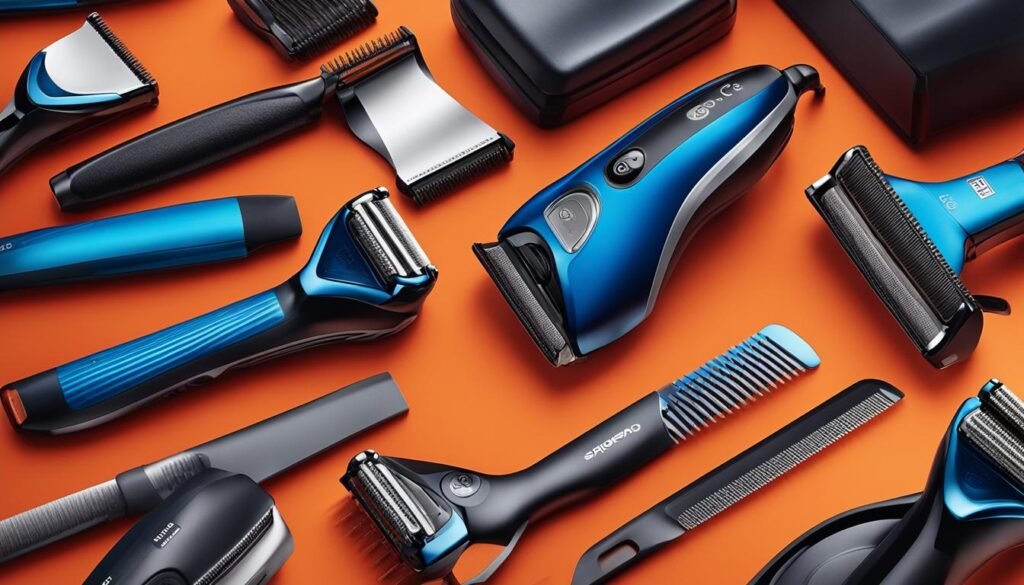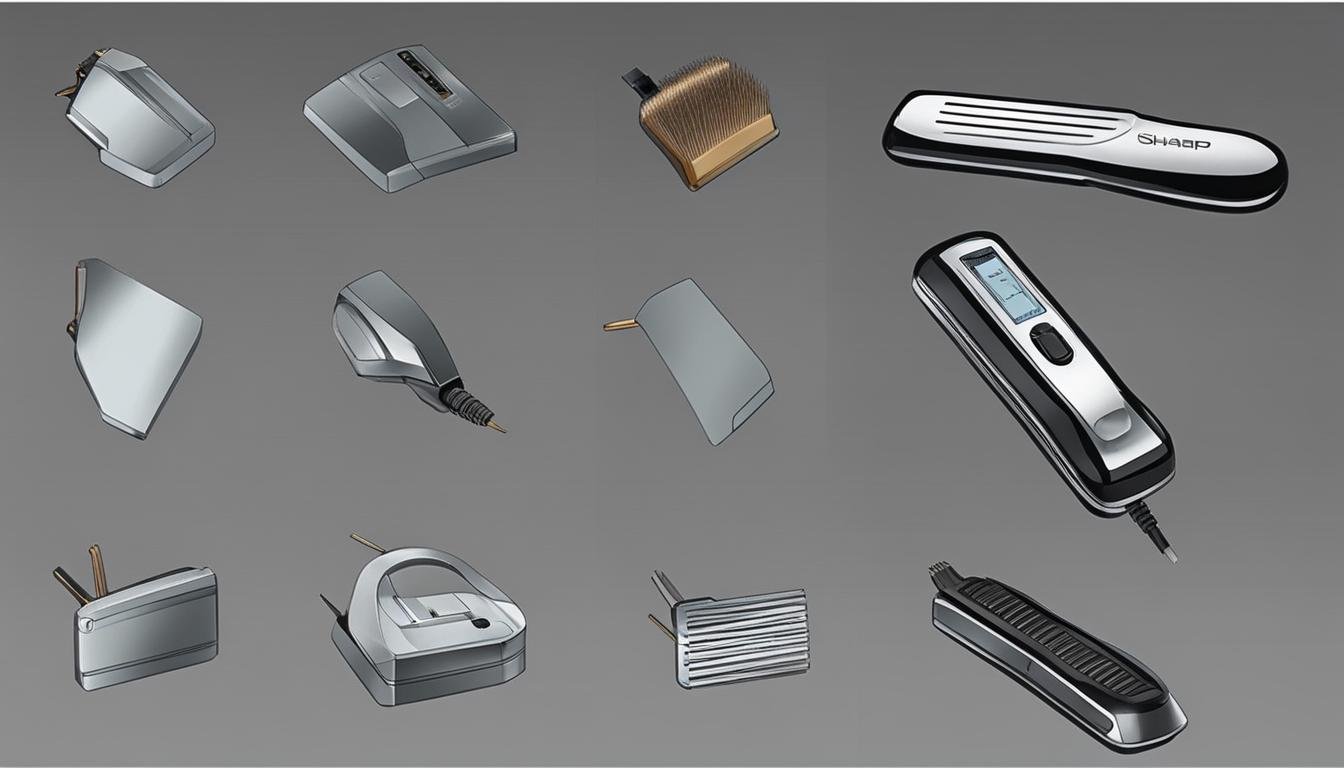A hair clipper is a specialized tool used to cut human head hair. It works on the same principle as scissors but is distinct from scissors themselves and razors. Hair clippers consist of a pair of sharpened comb-like blades in close contact, one above the other. They can be operated manually or electrically, with the blades oscillating from side to side. Manual clippers were invented in 1855, but electric clippers have largely replaced them due to their convenience. Hair clippers can be used for cutting both head hair and beard hair.
When choosing a hair clipper, it is important to consider the type of hair you will be cutting and the desired length. Regular maintenance and lubrication of the blades are crucial for optimal performance.
Manual Clippers
Manual hair clippers have a long history and were widely used in the past for their ability to cut hair close and fast. Operated by a pair of handles that are alternately squeezed together and released, manual clippers were the go-to tool for barbers, schoolboys, military men, and even inmates.
Invented in 1855 by Nikola Bizumić, a Serbian barber, manual clippers have played a significant role in the world of hair grooming. Although they have been largely replaced by electric clippers in Western countries, manual clippers still have their advantages.
One of the benefits of manual hair clippers is their lightweight and portable design. This makes them a convenient choice for barbers who need to move around, especially when providing professional services outside of a salon setting. Additionally, manual clippers do not require electricity or batteries, allowing for their use in remote areas with limited power resources.
However, it’s important to note that manual clippers require more manual effort compared to their electric counterparts. This can result in additional strain on the user’s hand and may impact the overall precision of the haircut.
Overall, while manual hair clippers may not be as popular as they once were, they still hold a place in the grooming industry. Whether as a backup option or for individuals who prefer the simplicity and portability they offer, manual clippers continue to serve a purpose for those seeking a classic approach to hair cutting.
The Benefits of Manual Clippers
- Lightweight and portable
- No need for electricity or batteries
- Classic and nostalgic appeal
Considerations for Using Manual Clippers:
- Requires more manual effort
- Less precision compared to electric clippers
Electric Clippers
Electric hair clippers have revolutionized the way we groom and maintain our hair. With the power of an electric motor, these clippers effortlessly oscillate the blades from side to side, providing a smooth and precise cutting experience.
The benefits of electric clippers are undeniable. They offer convenience and efficiency, making them a preferred choice for both professional hairstylists and individuals who prefer to cut their own hair at home. Unlike manual clippers, which require manual effort, electric clippers do all the work for you, saving time and effort.
Electric clippers come in different types, each with its own unique advantages. Magnetic clippers use magnetic forces to power the blades, ensuring consistent and powerful cutting performance. Rotary clippers can be powered by either direct or alternating current, providing versatility and flexibility. Pivot clippers utilize a spring mechanism to deliver high speed and torque, perfect for tackling thick and coarse hair.
When it comes to electric clippers, there are several reputable brands in the market. Wahl, Andis, and Oster are just a few examples of trusted electric clipper brands known for their quality and reliability. These brands offer a wide range of models with various features and accessories to cater to different hair types and desired styles.
One of the notable advantages of electric clippers is their rechargeable and cordless nature. This provides freedom of movement during use and eliminates the hassle of tangled cords. Additionally, many electric clippers come with adjustable settings, allowing you to customize the length of the cut to achieve your desired style.
Whether you’re a professional hairstylist or someone who prefers to maintain their hair at home, electric clippers offer a convenient and efficient way to achieve a polished look. With the right electric clipper, you can effortlessly trim and style your hair with precision and confidence.
Trimmers
Trimmers are versatile grooming tools designed for precision trimming and shaping of shorter and finer hairs, such as facial and body hair. With their smaller blades and closer cutting action, trimmers provide greater control and accuracy compared to clippers.
Whether it’s maintaining a well-groomed beard, precise detail work around the sideburns, or shaping the hairline, trimmers deliver professional results. They are especially useful in areas where hair grows differently or is hard to reach.
One of the key advantages of trimmers is their adaptability. They often come with a variety of attachments and heads for different purposes, catering to various grooming needs. For example, there are specific attachments for eyebrow trimming, enabling precise shaping and definition. Trim nose hair, ‘with precision thanks to nose trimmers.
When it comes to portability and ease of use, trimmers are unbeatable. They are more compact and lightweight than clippers, allowing for effortless handling and maneuvering. This makes them ideal for travel or quick touch-ups on the go.
Key Features of Trimmers:
- Precision trimming, shaping, and detailing
- Smaller blades for closer cutting
- Versatility with various attachments
- Compact and lightweight design
| Trimmer Type | Main Uses | Notable Brands |
|---|---|---|
| Beard Trimmers | Maintaining and shaping beards | Philips Norelco, Braun, Remington |
| Body Hair Trimmers | Grooming and trimming body hair | Wahl, Panasonic, Philips Norelco Bodygroom |
| Precision Trimmers | Delicate detailing and fine adjustments | Panasonic, Braun, Philips Norelco OneBlade |
| Detail Trimmers | Specialized trimming in hard-to-reach areas | Andis, Wahl, Remington |
Shavers
Shavers are essential electric devices for achieving a perfectly clean-shaven look. They offer convenience, precision, and versatility when it comes to grooming facial hair. There are two main types of shavers available: foil shavers and rotary shavers.
Foil Shavers
Foil shavers are designed to provide a close-to-the-skin shave, making them ideal for those who prefer a smooth finish. These shavers feature a thin, perforated foil that covers a set of oscillating blades. As the foil glides across the skin, it captures and cuts hair, ensuring a clean shave. The foil design also helps to minimize skin irritation, making it suitable for individuals with sensitive skin.
Rotary Shavers
On the other hand, rotary shavers are better suited for cutting longer and thicker facial hairs. These shavers feature multiple circular heads with rotating blades that flex in different directions for excellent hair capture. The rotating heads adapt to the natural contours of the face, allowing for efficient shaving even in hard-to-reach areas like the chin and neck.
Some shavers are designed to be waterproof or water-resistant, offering the convenience of use in the shower and easy cleaning under running water. Shavers are also available in cordless and rechargeable models, providing the freedom to groom without the hassle of tangled cords. The cordless feature allows for greater flexibility and maneuverability during shaving sessions.
It’s worth noting that there are also manual razors, commonly known as razor-like shavers. These razors require manual movement across the face or body to achieve a shave. They are typically used for shorter hair and provide a closer shave compared to electric shavers.
| Shaver Type | Key Features |
|---|---|
| Foil Shavers | Provides a close-to-the-skin shave Minimizes skin irritation Suitable for individuals with sensitive skin |
| Rotary Shavers | Excellent for cutting longer and thicker facial hairs Conforms to the contours of the face Efficient for hard-to-reach areas |
| Razor-like Shavers | Requires manual movement for shaving Closer shave compared to electric shavers |

Choosing the Right Tool
When it comes to hair grooming, selecting the right tools is essential for achieving your desired style. Whether you’re looking to trim your beard, maintain a clean shave, or cut your hair, understanding the differences between various grooming tools is crucial.
Hair clippers are the go-to choice for cutting longer hair on the head. With their adjustable settings, they allow you to easily achieve your preferred hair length. For those who prefer shorter and finer haircuts, trimmers are the way to go. They are designed to handle facial and body hair with precision and accuracy.
If a clean-shaven look is your goal, shavers are your best option. Electric shavers, such as foil and rotary shavers, offer a close shave, while razor-like shavers require manual movement and provide an even closer result.
Regardless of the tool you choose, regular maintenance and cleaning are essential to ensure optimal performance and longevity. Proper tool maintenance includes regular oiling, blade cleaning, and maintaining the battery life of electric tools. By taking care of your grooming tools, you can ensure they provide the best results for years to come.
